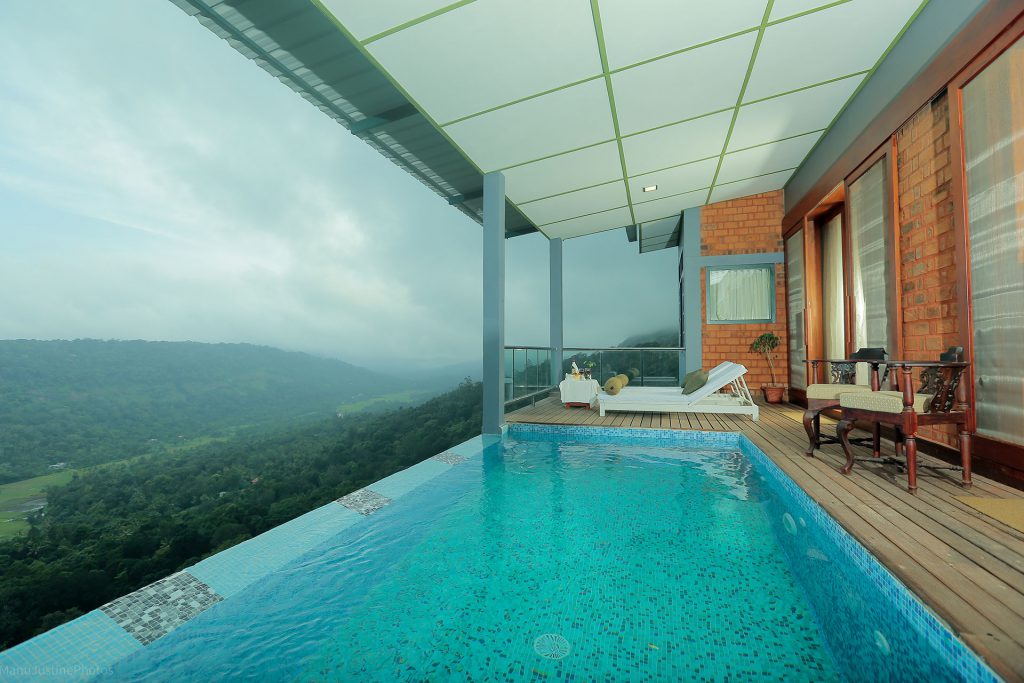Nestled in the Western Ghats of Kerala, Munnar is a picturesque hill station renowned for its sprawling tea gardens, lush greenery, and tranquil landscapes. This idyllic destination, often referred to as the “Kashmir of South India,” offers not only breathtaking vistas but also a rich history intertwined with the cultivation of spices. The unique blend of climate and fertile soil makes Munnar an ideal location for spice cultivation, drawing visitors from around the world to experience its aromatic allure. Prepare your senses for a journey that’s as flavorful as a pot of masala chai!
Historical Significance of Munnar
Munnar’s history dates back to the British colonial era when it was developed as a summer resort. The British, ever the spice aficionados and tea enthusiasts, recognized the region’s potential for growing tea and spices, leading to the establishment of numerous plantations. Over the years, Munnar has evolved into a major hub for spice cultivation, playing a significant role in the spice trade. The legacy of this era is still evident in the colonial architecture and the well-preserved plantations that dot the landscape. Just imagine, sipping tea in a quaint British bungalow, feeling like a 19th-century aristocrat without the stiff collar!
Climate and Geography of Munnar
Munnar’s unique climate and geographical features contribute significantly to its reputation as a prime location for spice cultivation. Situated at an elevation of about 1,600 meters (5,200 feet) above sea level, Munnar enjoys a cool, temperate climate throughout the year. The region receives ample rainfall during the monsoon season, which, combined with the fertile soil, creates optimal conditions for growing a variety of spices. The undulating hills and lush valleys further enhance the area’s natural beauty, making it a perfect blend of agriculture and tourism. Imagine being in a postcard, but with the added bonus of spice-scented breezes wafting through the air.
The Spice Heritage of Munnar
Spices have been an integral part of Munnar’s heritage for centuries. The region’s spice cultivation dates back to ancient times when traders from across the world sought the exotic flavors of India. Munnar, with its strategic location and favorable climate, emerged as a significant center for spice production. The legacy of this rich heritage continues to thrive, with spice plantations playing a crucial role in the local economy and culture. It’s like stepping into a time machine, where every whiff of spice tells a story of adventurous traders and exotic journeys.
Major Spices Cultivated in Munnar
Munnar’s spice plantations are renowned for producing a variety of spices that are essential to South Indian cuisine and beyond. Some of the major spices cultivated in Munnar include:
- Cardamom: Often referred to as the “Queen of Spices,” cardamom is one of the most valuable spices grown in Munnar. Its aromatic seeds are used in cooking, baking, and even traditional medicine. It’s like the Beyoncé of spices – versatile and always in the spotlight.
- Pepper: Known as the “King of Spices,” black pepper from Munnar is highly prized for its pungent flavor and aroma. It is a staple in many culinary traditions worldwide. Think of it as the George Clooney of your spice rack – smooth, reliable, and universally adored.
- Cinnamon and Clove: These spices are essential for their warm, sweet flavors and are commonly used in both sweet and savory dishes. They’re like the dynamic duo of spices – always ready to add a touch of magic to your dishes.
- Nutmeg and Mace: These closely related spices add a distinctive flavor to dishes and are also valued for their medicinal properties. They’re like the twins of the spice world, each bringing their own unique flair to the table.
- Turmeric and Ginger: Known for their health benefits, turmeric and ginger are widely used in South Indian cooking and traditional medicine. These two are like the superheroes of spices – vibrant, powerful, and good for you!
Cardamom: The Queen of Spices
Cardamom holds a place of honor in the spice hierarchy of Munnar. This aromatic spice is cultivated extensively in the region, thriving in the cool, shaded slopes of the Western Ghats. Cardamom pods are harvested by hand, a labor-intensive process that ensures the highest quality. In South Indian cuisine, cardamom is a key ingredient, adding a unique flavor to a variety of dishes, from savory curries to sweet desserts. Its essential oils are also used in traditional medicine to treat a range of ailments, making it a valuable crop both economically and culturally. It’s the diva of the spice world, demanding attention and delivering every time!
Pepper: The King of Spices
Black pepper, often dubbed the “King of Spices,” is another significant crop in Munnar. The pepper vines, which grow well in the humid climate of the region, produce berries that are dried to create black peppercorns. This spice is ubiquitous in kitchens around the world, valued for its sharp, pungent taste and versatility in cooking. In addition to its culinary uses, black pepper is also known for its medicinal properties, including its ability to improve digestion and promote overall health. It’s the reliable workhorse of the spice cabinet – always there to spice things up!
Cinnamon and Clove Cultivation
Cinnamon and clove are two spices that add warmth and depth to many dishes. In Munnar, these spices are cultivated with great care. Cinnamon, derived from the inner bark of the tree, has a sweet and woody flavor that enhances both sweet and savory recipes. Clove, with its strong, aromatic flavor, is often used in spice blends and as a key ingredient in various traditional dishes. Both spices are also known for their health benefits, including anti-inflammatory and antibacterial properties. They’re like the cozy sweater of spices – warm, comforting, and always in style.
Nutmeg and Mace
Nutmeg and mace are two closely related spices that are harvested from the same tree. Nutmeg is the seed, while mace is the red, lacy covering that surrounds it. These spices are highly valued for their distinctive flavors and aromatic qualities. In Munnar, nutmeg and mace are grown in plantations that take advantage of the region’s fertile soil and favorable climate. These spices are used in a variety of culinary applications, from baking to seasoning savory dishes, and are also prized for their medicinal properties. They’re the hidden gems of the spice world – subtle but unforgettable.
Turmeric and Ginger
Turmeric and ginger are essential components of South Indian cuisine, known for their vibrant colors and health benefits. Turmeric, with its bright yellow hue, is a key ingredient in many Indian dishes, imparting both color and a warm, earthy flavor. Ginger, with its spicy and slightly sweet taste, is used in everything from curries to beverages. Both spices are also renowned for their medicinal properties, including anti-inflammatory and antioxidant effects. They’re the vibrant artists of the spice world – bold, colorful, and full of life!
Spice Plantations and Tours
One of the best ways to experience the rich spice heritage of Munnar is to visit its spice plantations. Many plantations offer guided tours where visitors can learn about the cultivation and processing of various spices. These tours provide a fascinating insight into the agricultural practices and the hard work that goes into producing these valuable crops. Walking through the plantations, surrounded by the heady aroma of spices, is an immersive experience that connects visitors with the region’s agricultural roots. It’s like stepping into a spice-scented wonderland where every turn is an adventure.
Munnar’s Spice Markets
Exploring the spice markets of Munnar is a sensory delight. These bustling markets offer a wide variety of fresh and dried spices, allowing visitors to purchase high-quality products directly from the source. The vibrant colors and intense aromas of the spices create an unforgettable shopping experience. Local vendors are often happy to share their knowledge about the different spices and their uses, making it an educational experience as well. Popular spices available in these markets include cardamom, black pepper, cinnamon, clove, nutmeg, mace, turmeric, and ginger. It’s a bit like a treasure hunt, but with more delicious rewards!
Accommodations in Munnar
Munnar offers a wide range of accommodations to suit every budget and preference. From luxury resorts and boutique hotels to budget guesthouses and homestays, there is something for everyone. Many of these accommodations are located amidst the scenic beauty of the plantations, providing a tranquil and immersive experience. Staying in a plantation bungalow or a cozy cottage allows visitors to connect with nature and enjoy the serenity of the surroundings. The warm hospitality of the locals adds to the charm of the stay, making it a memorable experience. It’s like finding your own little slice of paradise, with a side of spice!
Conclusion: The Essence of Munnar
Munnar, with its stunning landscapes and rich spice heritage, offers a unique blend of natural beauty and cultural richness. The spices of Munnar not only add flavor to South Indian cuisine but also play a crucial role in the region’s economy and traditions. Whether you are exploring the spice plantations, shopping in the local markets, or savoring the delicious cuisine, Munnar promises an unforgettable experience. The sustainable practices and cultural significance of spice farming further enhance the allure of this South Indian gem, making it a must-visit destination for travelers and spice enthusiasts alike. So pack your bags, follow your nose, and get ready for an adventure that’s truly spiced to perfection!



